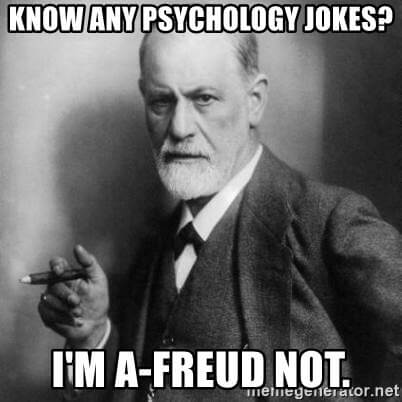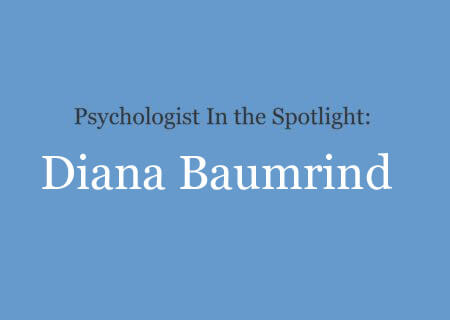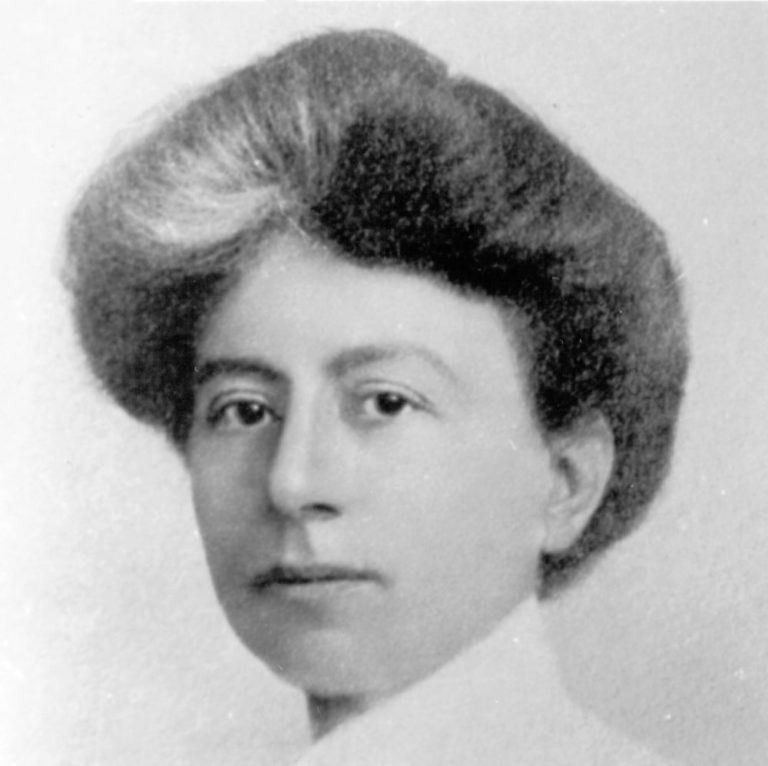Abraham Maslow Biography
Abraham Maslow was an influential American psychologist who founded the school of thought known as humanistic psychology. His famous hierarchy of needs describes how people are motivated by increasingly complex needs. Maslow was inspired to develop his theory by his dissatisfaction with some of the major theories of psychology that existed at the time. He…
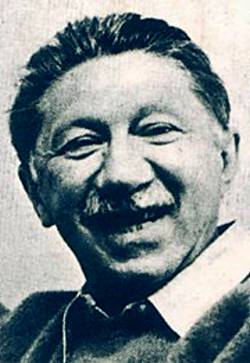
Abraham Maslow was an influential American psychologist who founded the school of thought known as humanistic psychology. His famous hierarchy of needs describes how people are motivated by increasingly complex needs.
Maslow was inspired to develop his theory by his dissatisfaction with some of the major theories of psychology that existed at the time. He believed that Freud’s theory of psychoanalysis focused too heavily on the negative aspects of human nature. On the other hand, behaviorism was too mechanistic and did not account for things such as free will and internal thoughts and feelings. Instead, humanistic psychology focused on people’s innate goodness and took a much more positive approach to human psychology.
Let’s take a closer look at Maslow’s life and theories.
Abraham Maslow’s Early Life
Abraham Maslow was born on April 1, 1908. He was the first of seven children born to his Russian-Jewish immigrant parents. While his parents were working class, they valued education and pushed him hard academically and he spent much of his time immersed in books.
By all accounts, his parents were cold, insensitive, and even cruel at times. His father was a heavy drinker prone to making cutting remarks about his oldest son’s looks and intelligence, all the while pushing him to excel at things that held no interest for the young Maslow. His father once publicly derided his son’s appearance, deeming him “ugly.”
These negative experiences at home were further compounded by Maslow’s rocky relationship with his mother. He would later suggest that he loathed his mother and found her repulsive. To illustrate this point, Maslow recounted a tale of finding two abandoned kittens and bringing them home. When his mother discovered the kittens, she killed them in front of her son.
This damaging home life was enough to damage Maslow’s self-esteem, but he also struggled with challenges outside of the home. Anti-Semitism directed at him by his friends and teachers made his academic and social life difficult.
These challenges are perhaps why the young Maslow took such great refuge in books, which became a safe place away from the criticism and bigotry he faced. He would later describe his childhood as lonely and unhappy.
Maslow’s Education
He studied at City College of New York and took law courses to satisfy his father’s wishes. He quickly found that he hated law and quickly dropped the courses. He briefly studied at Cornell but had to drop out due to the high costs and his poor grades. Maslow very nearly lost his interest in psychology after taking a course from Edward B. Titchener, who Maslow found tedious.
He eventually returned to City College of New York and went to the University of Wisconsin. He married his longtime love and first cousin, Bertha Goodman, in 1928, and the two would go on to have two daughters. While Maslow’s childhood was marred by unhappy relationships with his parents, his marriage and family life were a happy affairs. He would later suggest that his marriage marked the true beginning of his life.
Maslow earned his BA in 1930, his MA in 1931, and his PhD in 1934, all in psychology and all from the University of Wisconsin. During his studies, he became the very first doctoral student of psychologist Harry Harlow, best remembered for his controversial monkey experiments on maternal deprivation.
After earning his Ph.D., Maslow spent 18 months at a fellowship at Columbia, where he worked with Edward Thorndike and began to study human sexuality.
Maslow’s Career
Maslow took a position teaching at Brooklyn College in 1937 and continued to work at the school until 1951. The development of his groundbreaking theories was heavily influenced by his observations of the world around him. World War II played a role in his desire to search for a more peaceful vision of human psychology.
His observations of his esteemed mentors, anthropologist Ruth Benedict and psychologist Max Wertheimer, contributed significantly to his concept of the self-actualized individual.
Maslow’s Role in Humanistic Psychology
In 1951, Maslow took a position as the psychology department chair at Brandeis University. During this time, Maslow became the key figure behind the rise of humanistic psychology, often referred to as the “third force” (psychoanalysis and behaviorism being the first and second).
In 1954, Maslow published his most famous work, Motivation and Personality, which detailed his approach. In 1962, Maslow founded the American Association of Humanistic Psychology. Early members of the association included major figures such as Carl Rogers and George Kelly.
In 1966, he was elected President of the American Psychological Association. Eventually, Maslow relocated to California due to his increasingly poor health and passed away on June 8, 1970, from a heart attack.
Maslow’s Theory of Motivation
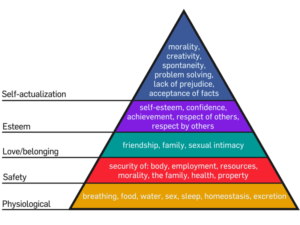
Maslow’s theory grew out of his belief that so much of early psychology had focused on dysfunction but not enough on the psychology of healthy, happy people. In his now-famous hierarchy of needs, Maslow detailed how increasingly complex needs build on each other and compel people to pursue things that fulfill those needs.
The needs he described were arranged in a hierarchy, which is most often portrayed as a pyramid.
At the base of this pyramid lie the physiological needs. These are the needs for basic survival, such as food, water, sleep, and sex. Once these needs have been adequately fulfilled, the next level of needs, which are focused on safety and security, becomes more critical.
The third level of the hierarchy is focused on belonging and includes social needs such as friendships, family, romantic relationships, and other social affiliations. Once these needs have been met, people begin to pursue the need for esteem, both for the self and for others.
It is once all of these lower-level needs have been satisfied that people begin the pursuit of the peak need in the hierarchy, that of self-actualization. Maslow described self-actualization as the desire to become all that a person can be and to fulfill one’s total potential.
While it is usually suggested that lower-level needs must be met before moving on to higher-level ones, researchers have found that even people living in utter poverty and deprivation are still moved to satisfy higher-level needs such as belongingness and esteem.
How Did Abraham Maslow Contribute to Psychology?
Abraham Maslow’s early life may have been marked by pain and difficulty, but he turned that pain into a positive force in psychology. His hierarchy of needs stands as Maslow’s best-known achievements.
His hierarchy of needs contributed to understanding how and why people engage in different actions. His focus on the goodness of people led to the emergence of humanism as a powerful force within psychology.
From this approach emerged new ways of treating people who were struggling with mental health issues and psychological distress. His work also contributed immensely to the development of positive psychology, a branch centered on understanding what makes people happy.
You can learn more about your levels of self-actualization by taking our self-actualization test.
Sources:
Brady-Amoon, P. (2012). Maslow, A. H.. In: Rieber, R.W. (eds) Encyclopedia of the History of Psychological Theories. Springer, New York, NY. https://doi.org/10.1007/978-1-4419-0463-8_182
Hall, M. H. (1968). A conversation with Abraham Maslow. Psychology Today, pp. 35-37, 54-57.
King, D.B., Woody, W.D., & Viney, W. (2015). History of Psychology: Ideas and Context. New York: Routledge.
Maslow, A.H. (1943). A Theory of Human Motivation. Psychological Review, 50, 370-396.
Maslow, A.H. (1987). Motivation and Personality. (3rd ed.). New York, NY: Harper & Row.
Navy, S.L. (2020). Theory of Human Motivation—Abraham Maslow. In: Akpan, B., Kennedy, T.J. (eds) Science Education in Theory and Practice. Springer Texts in Education. Springer, Cham. https://doi.org/10.1007/978-3-030-43620-9_2
Tay L, and Diener E. (2011). Needs and subjective well-being around the world. Journal of Personal Social Psychology, 101, 2, 354-65.
